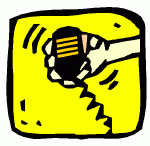The Colorado FM Sprint
Sponsored by: The Colorado VHF Group (KØYB) and the Tri-Lakes Monument Fire Radio Association (WØTLM)
Direct any questions to k0yb@qsl.net
Rules and FAQ are posted on the KØYB web site.
Saturday – September 10, 2011
This contest is held concurrently with the ARRL September VHF QSO Party, with compatible rules and operating procedures. The purpose of this contest is to:
- Promote the use of FM VHF/UHF simplex
- Provide an opportunity for radio amateurs to test the limits of their stations using FM VHF/UHF and to experiment with ways to improve their stations
- Practice deploying portable and mobile operation as a means of identifying effective locations for temporary relay stations
- Provide a simple and enjoyable radio contest experience (“Have fun!”)
Time:
Saturday, Sept 10, 2011; 1200 to 1700 Mountain Time (1800 to 2300 UTC)
Objective:
To work as many stations as possible using FM simplex on the 146 MHz, 222 MHz and 440 MHz bands in as many different VHF grids as possible.
Frequencies:
Operate on FM simplex frequencies consistent with the Colorado Council of Amateur Radio Clubs (CCARC) band plans
(Consistent with the ARRL Rules, 146.52 MHz is not allowed to be used in the contest.)
Suggested Frequencies:
2 Meters: 146.58, 146.55
222 MHz: 223.5 MHz
440 MHz: 446.0, 446.100 MHz
Do not operate on repeater frequencies or 146.52 MHz, the National Simplex Calling Frequency.
Remember to be a considerate operator and share the frequency with other operators.
Contest Exchange
To complete a contest QSO, you and the other station must copy each other’s callsign and 4-digit Grid Locator. You may optionally exchange Name and geographic location (city, landmark, etc).
Entry Categories:
The following entry categories are available for this contest, consistent with the entry categories for the ARRL September VHF QSO Party. All categories (excluding Single Operator Portable) operate within these power limits: (146 MHz–200 W PEP, 222 MHz 100 W PEP, 440 MHz 100 W PEP).
Single Operator – same as Single Operator Low Power in the ARRL rules
Single Operator Portable – power limit of 10 W PEP, operating from a fixed location using a portable power source, portable equipment and antennas
Rover – operates from 2 or more grid squares with 1 or 2 operators, same definition as Limited Rover in the ARRL rules. Rovers must sign “Rover” after their callsign.
Multioperator – operates with more than with operator from a fixed location
Scoring
QSO Points: Count one point for each 146 MHz QSO and two points for each 222 MHz and 440 MHz QSO.
Multiplier: The total number of different grid squares worked per band. Each grid counts as one multiplier on each band it is worked.
Final score: Multiply the total number of QSO points from all bands operated by the total number of multipliers for final score.
Rovers only: The final score consists of the total number of QSO points from all bands times the sum of unique multipliers (grid squares) worked per band (regardless of which grid square they were made in) plus one additional multiplier for every grid square from which they successfully completed a contact.
Miscellaneous:
1. Use only one call sign per entry per station, except family members who share a station.
2. A rover station may use only one call sign.
3. Soliciting contacts during the contest on repeaters, e-mail, telephone, etc. is not allowed.
4. Final interpretation of these rules is the sole responsibility of the contest committee.
Awards:
Certificates will be issued to top scoring entrants in each category. Other certificates may be issued depending on the level of competition present in the contest. Results will be listed on the KØYB web site at http://www.qsl.net/k0yb
Log Entry:
1. Log entries must be received by September 30, 2011.
2. A log entry contains the following for each contact completed: Date; Time (Universal Coordinated Time); Station Worked; Grid Locator
3. A summary contains: Your name, call, and address; entry category; grid locator; score calculation; and this statement: “I have observed all rules of the contest and have operated my station in accordance with FCC rules.”
4. Entrants are strongly encouraged to submit an electronic log in Cabrillo format, using commonly available logging programs (configured for ARRL September VHF QSO Party). Send electronic logs to k0yb@qsl.net, with Cabrillo file attached and subject line containing your call sign and the words “FM Sprint”.
5. Paper logs may be sent to: K0YB – Contest Logs, 21060 Capella Drive, Monument, CO 80132
Grid Locator Information:
Grids are 2° longitude x 1° latitude squares designated with 2-letters and 2-numbers, such as DM78. To determine which grid you are operating from, refer to this web page: http://www.k0nr.com/rwitte/vhf_grids.html or use a GPS receiver that displays the location in Maidenhead (vhf grid) format.
Here are some general guidelines that may help in case you work someone who does not know their grid square:
- Greater Denver is in grid DM79
- Boulder is split between grids DM79 and DN70, so check the location carefully.
- Colorado Springs and Pueblo are in grid DM78
- Fort Collins, Loveland and Longmont are in grid DN70.
 Recently on Google Plus there was a discussion of what qualifies as a separate country in the amateur radio world. The confusion point was that Alaska was showing up in logging software as a “country”. It turns out is is both a country and a state.
Recently on Google Plus there was a discussion of what qualifies as a separate country in the amateur radio world. The confusion point was that Alaska was showing up in logging software as a “country”. It turns out is is both a country and a state.












